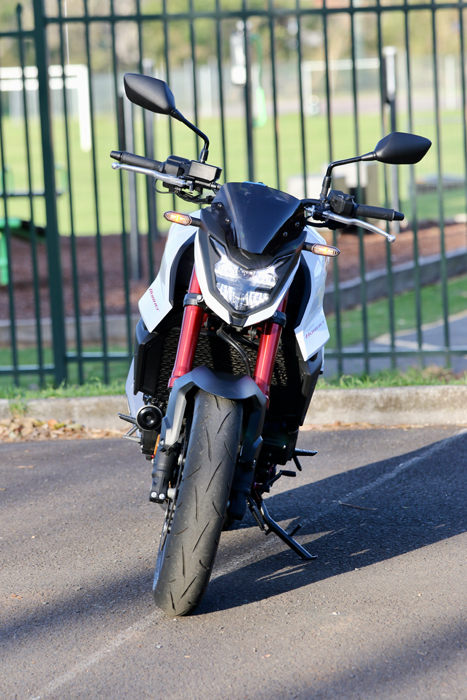We’ve tested it and compared it but what’s the 2023 Honda CB750 Hornet like to live with?
Having missed out on AMCN’s recent midsize nakedbike shootout (Vol 73 No 04), I was hanging out for a ride on the new Honda CB750 Hornet to see for myself how it compared with my previous experiences on the Suzuki GSX-8S and Yamaha MT-07.
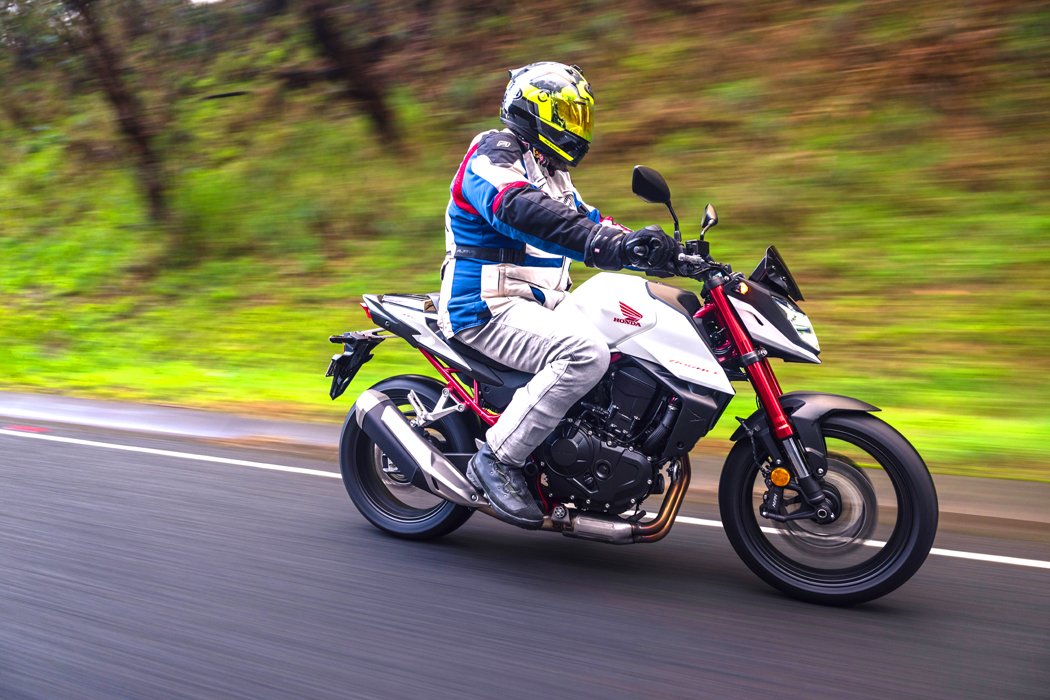
Take a look at the numbers and, size-wise, the Hornet is very similar to its competitors, but hop aboard and it feels more compact thanks to a slightly lower seat height and a riding position that doesn’t let you move you butt back very far thanks to the bum-stop on the optional seat cowl fitted to our testbike. It’s only a short reach to the handlebar and not a long stretch to the ’pegs, the latter potentially making the riding position feel a bit cramped for taller riders.
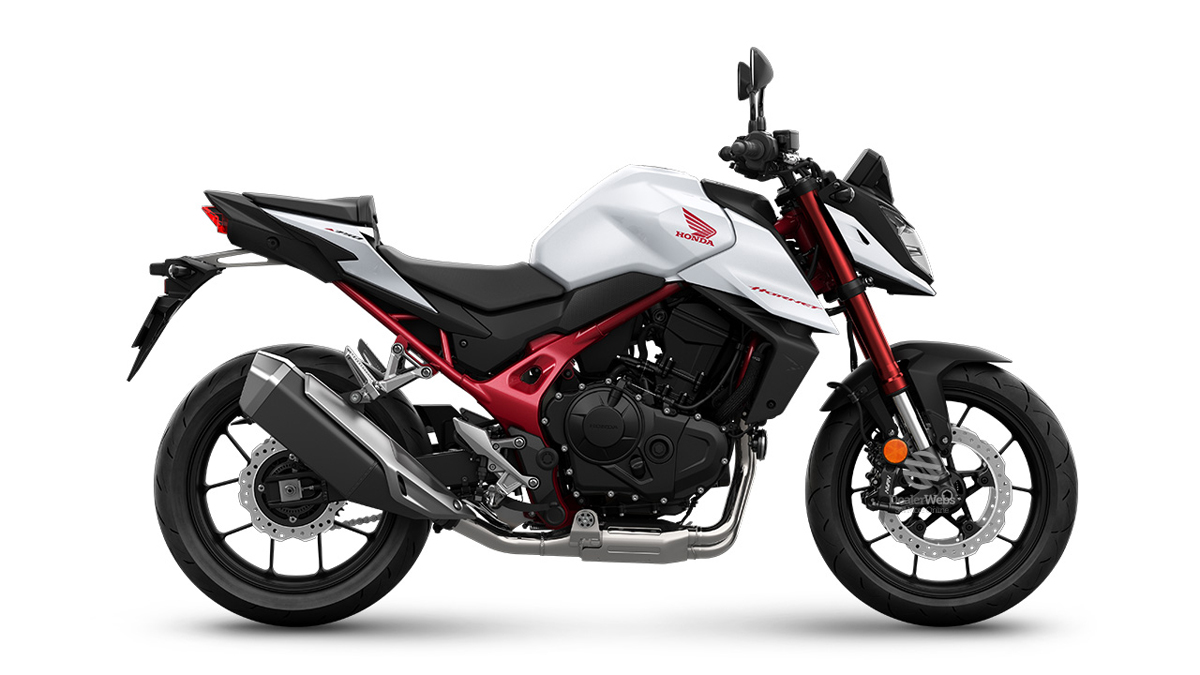
When I first hit the starter, I was surprised at the meaty growl emitted by the 755cc parallel twin, and the exhaust note only improves as revs increase. The Hornet’s powerpant definitely has more character than I was expecting; it also has more grunt than I was expecting, and while peak outputs of 67.5kW at 9500rpm and 75Nm at 7250rpm might not get your heart racing, the low-ish gearing and the instant throttle response is enough to have you easily lofting the front wheel without much effort, especially in Sport mode.
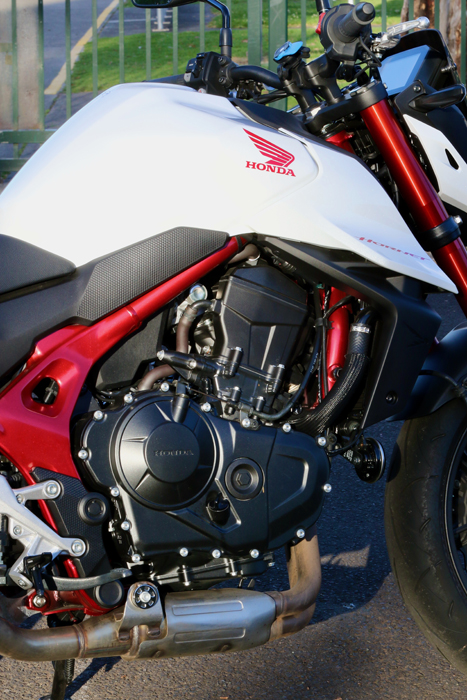
There are four ride modes – Rain, Standard, Sport and User – and a comprehensive electronics package that includes adjustable throttle response, TC and engine brake control. Swapping between ride modes is easy thanks to the big mode button on the left switchblock; simply scroll until you see the mode you want on the colour TFT screen and then close the throttle momentarily to select it. Adjusting individual parameters in User mode is a bit more involved, but not overly difficult.
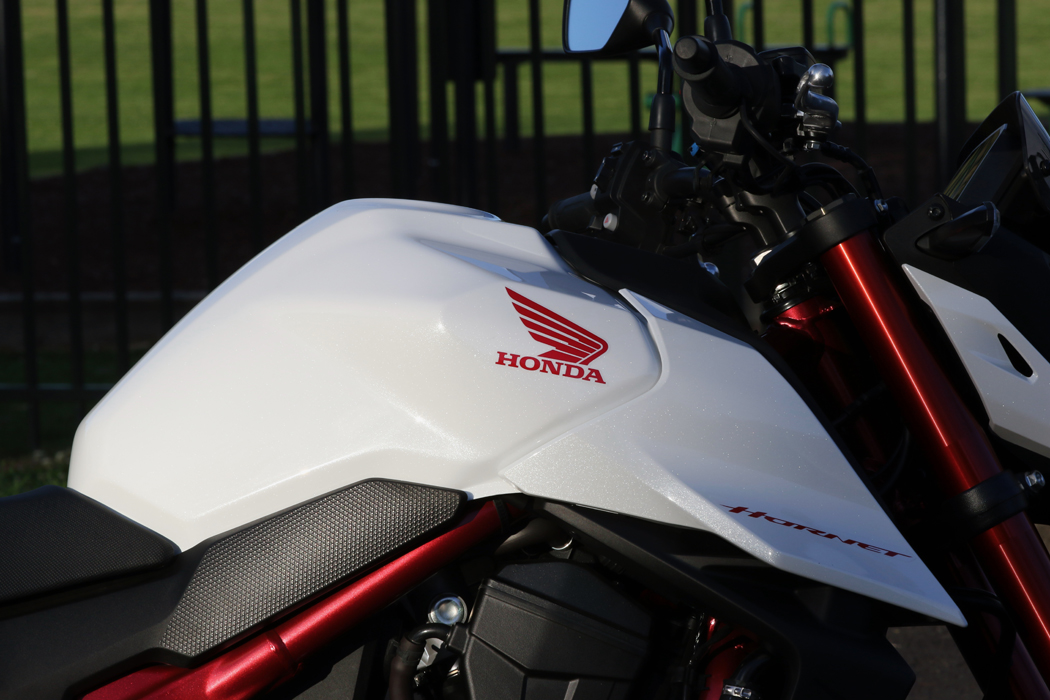
In Sport mode the throttle response feels aggressive, especially when riding in stop-start traffic, and while the Standard ride mode tones down throttle response, it certainly doesn’t make it feel dull like Rain mode does.

The Hornet’s bright, full-colour TFT screen is packed with info and while the important stuff like speed, tacho, fuel level and ride mode are easy to see, some of the other info is a bit harder to spot. There are four screen presentations to choose from, however, and you can also tailor various bits of information, so you should be able to find a setup that works for you.

Shifting through the gears is aided by the optional two-way quickshifter as fitted to our testbike. This is a $400 extra but well worth the investment. The cable-operated clutch is light and progressive but there’s no span adjustment on the lever; this isn’t a biggie though, because thanks to the quickshifter you only really use it when pulling away or pulling up.
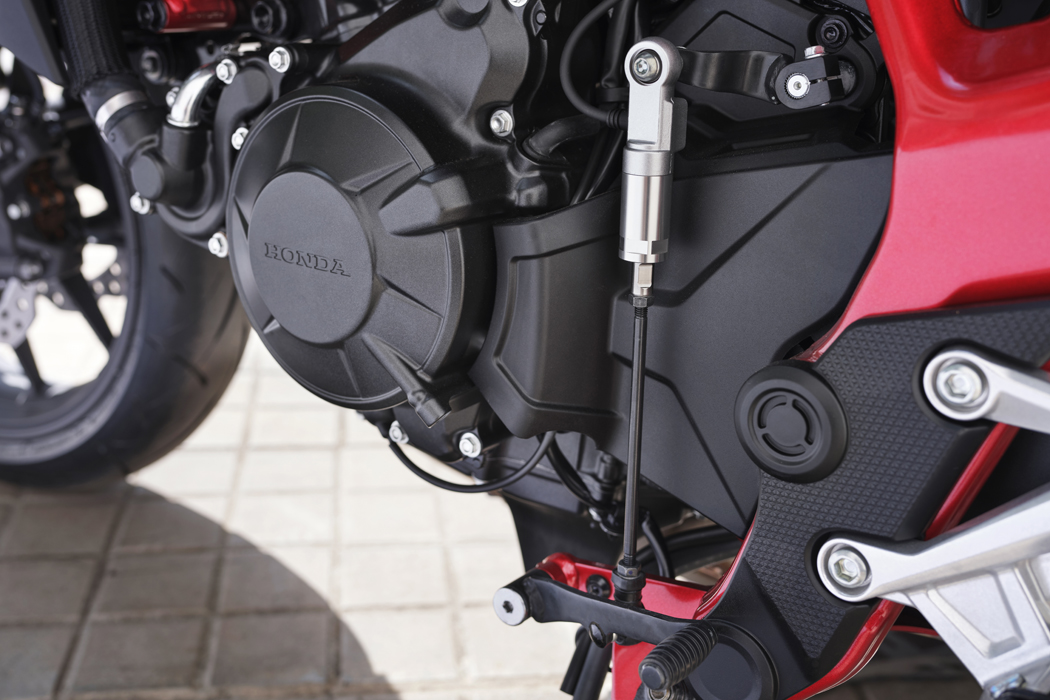
There’s span adjustment on the front brake lever and braking performance is more than adequate for the road riding I have done to date. As Pete pointed out in the nakedbike shootout, the Hornet runs solid discs up front instead of semi floaters, gripped by four-piston radial-mount calipers, and it will be interesting to see how these perform at higher speeds such as at a trackday. I’m keen to see if the Hornet translates from roadbike to trackday toy as well as the GSX-8S I tested at Lakeside a couple of months ago did, so a session at SMSP is on the agenda.
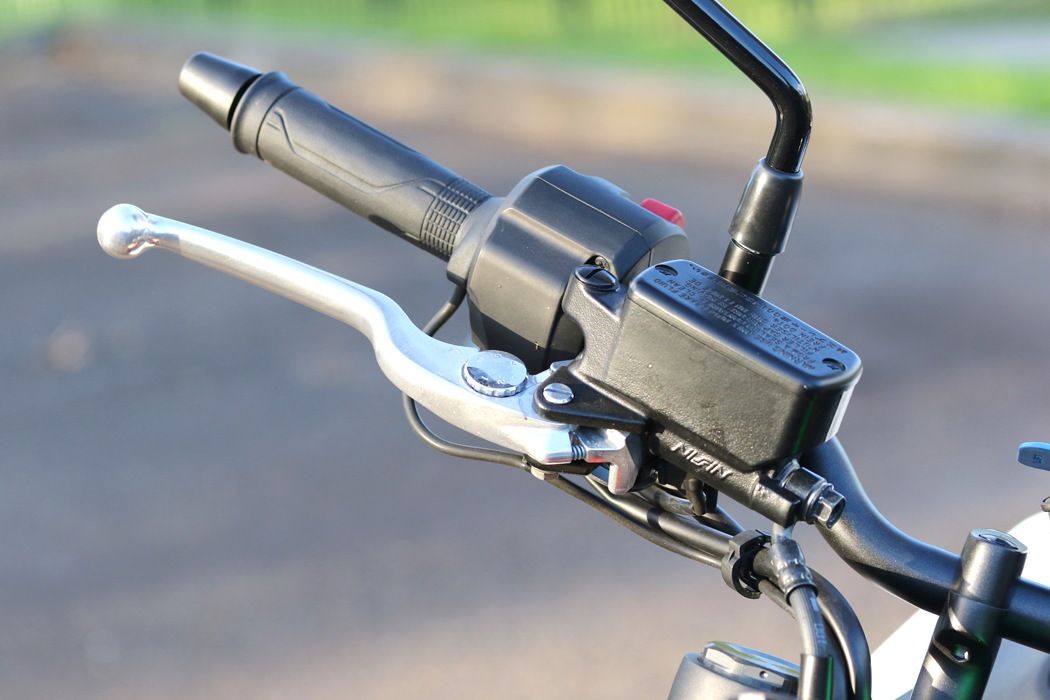
The Hornet’s suspension package is relatively basic – a non-adjustable Showa 41mm USD fork up front and a preload adjustable monoshock out the back – it feels well sorted, providing a good compromise between compliance and control, and soaking up bumps on patchy sections but not feeling too soft at higher speeds. Without a pillion seat and nowhere to strap down luggage, I doubt we’ll have much need to play around with the rear preload except perhaps when swapping between riders.
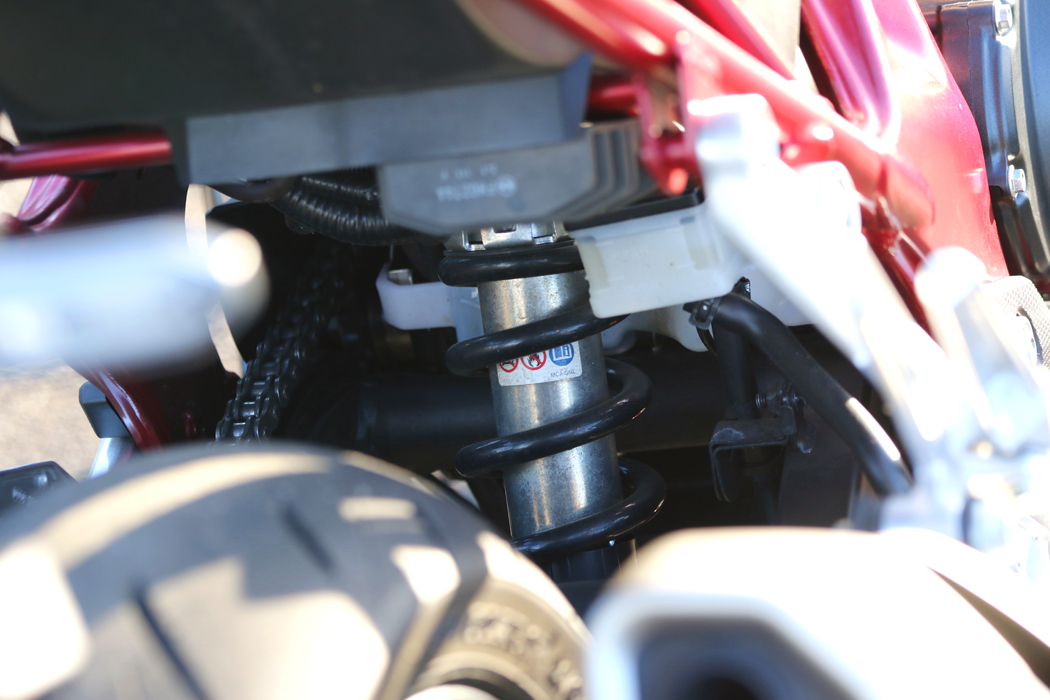
The Hornet tips into corners quickly, no doubt aided by its light weight and the not-so-wide 160-section rear tyre. It wears reasonably sticky Dunlop Sportmax Roadsport2 rubber, which feels good in the dry and offers decent grip in damp conditions.
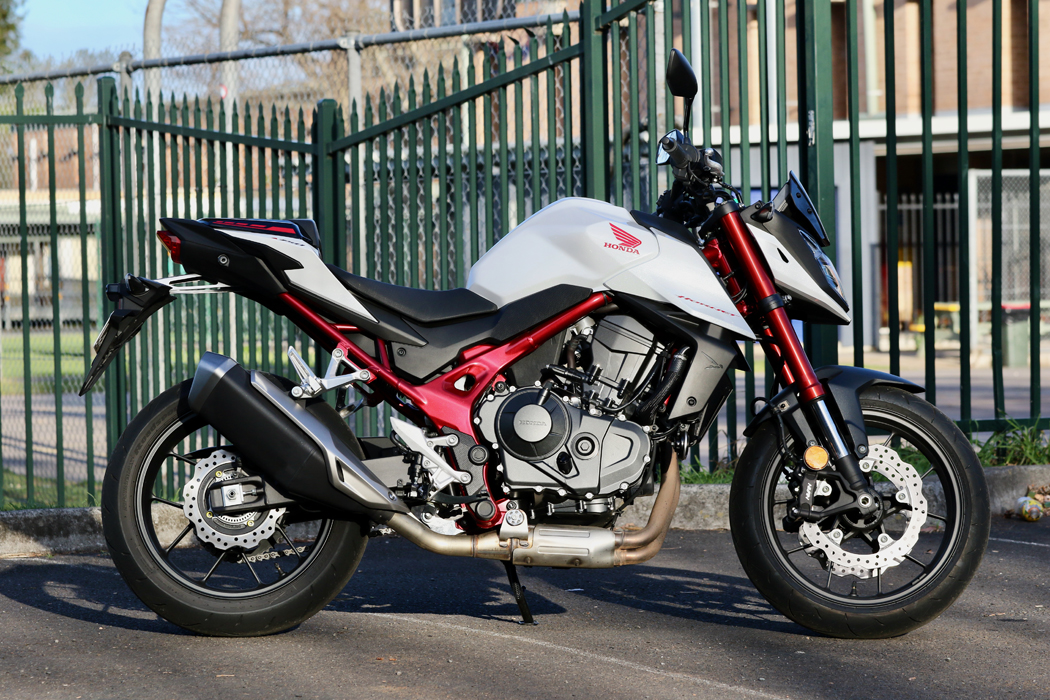
Another accessory fitted to our testbike is the small screen above the headlight, called a Meter Visor Kit. While there’s not a lot of wind protection I didn’t cop any buffeting around my helmet at freeway speeds, and the little screen might help in this regard.

I reckon the Pearl Glare White of our testbike looks better than the Graphite Black; both colour schemes run the same red frame and fork legs, and the white disguises this a bit better for a more cohesive look… and it has a great-looking speckle in it that stands out in full sunlight. Fit and finish is good, and the optional black aluminium footpegs look trick.

The Honda Smartphone Voice Control System (HVCS) is a bit fiddly to set up but seems easy enough to use, and there’s plenty of space on the handlebar to easily fit a phone mount such as a Quad Lock.
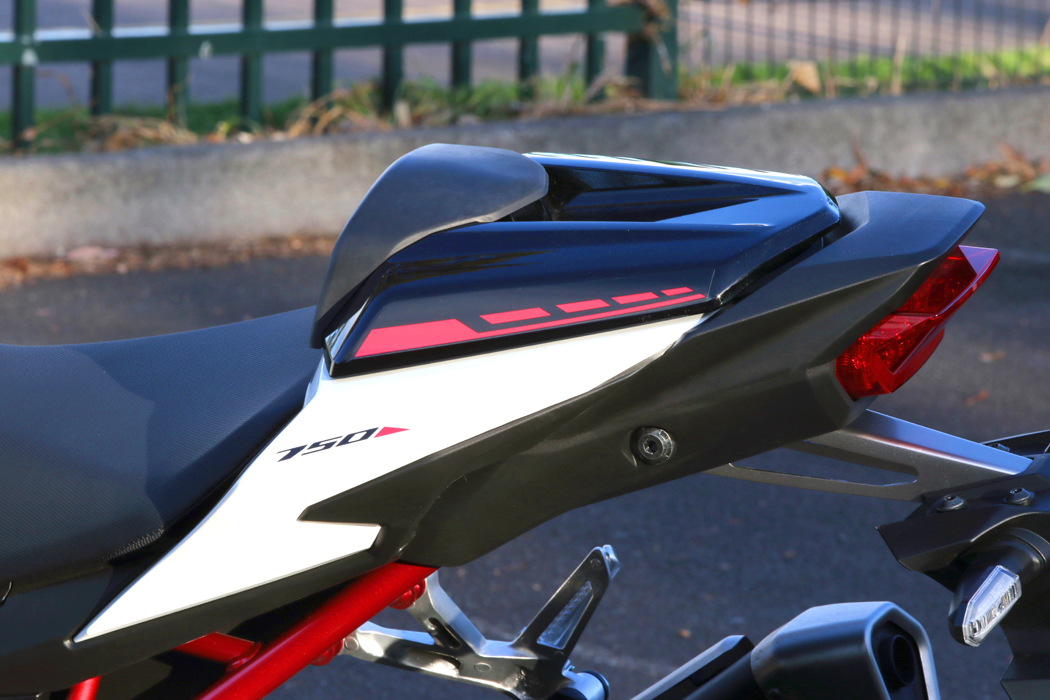
We’ll put some decent miles on the Hornet over the next few months on road and track, and fling it to a few contributors to get their opinions on it. We’ll keep you posted.

Test Dean Mellor + Photography AMCN archive & DM
